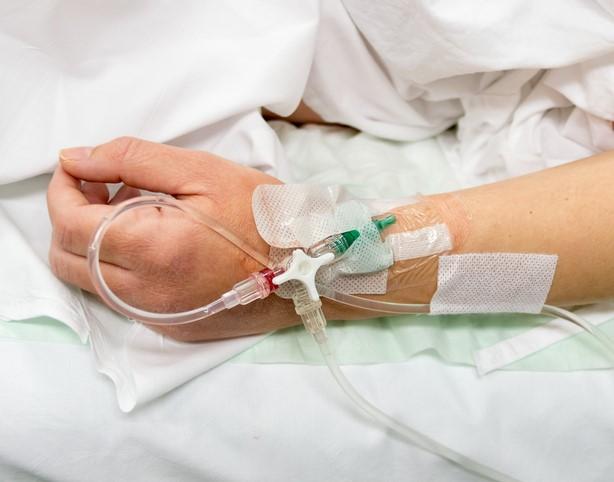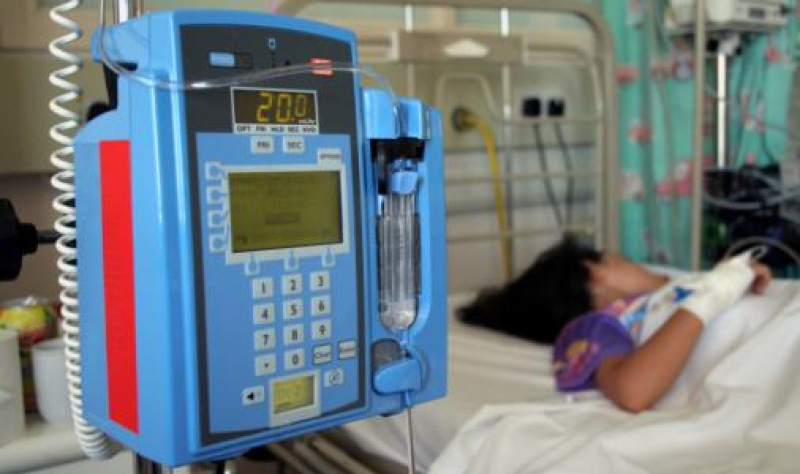Covid-19 Vaccine Protection among Children and Adolescents in Qatar | NEJM


Study Population and Data Sources
We conducted this study in Qatar and analyzed data from the national, federated databases for Covid-19 laboratory testing, vaccination, hospitalization, and death, retrieved from the integrated, nationwide, digital-health information platform. These databases include all SARS-CoV-2–related data, such as results from all polymerase-chain-reaction (PCR) tests, and associated demographic information, with no missing information since the onset of the pandemic. The databases also include results from rapid antigen tests that were conducted at health care facilities starting from January 5, 2022. Rapid antigen test kits are available for purchase in pharmacies in Qatar, but outcomes of home-based testing are not reported or documented in the national databases and thus were not factored in our study, including in the estimations of cumulative incidence or incidence rate. Detailed descriptions of the population of Qatar and of the national databases have been reported previously.3,5,6,9,10
Study Design and Cohorts
Three matched, retrospective cohort studies emulating randomized target trials10,11 were conducted to investigate the effectiveness of the BNT162b2 vaccine among children 5 to 11 years of age and among adolescents 12 to 17 years of age at least 14 days after the receipt of the second vaccine dose. The target of estimation was the effect of being vaccinated among persons who received the vaccine; the average treatment effect among treated persons quantifies vaccine effectiveness among the subpopulation that was vaccinated.
In each study, the incidence of infection or of severe,12 critical,12 or fatal13 Covid-19 was compared between the national cohort of previously uninfected persons who had completed the two-dose BNT162b2 primary series (designated as the vaccinated cohort) and the national control cohort of persons who were previously uninfected and were unvaccinated (designated as the control cohort). The focus of the studies was on vaccine-related immunity and not on a hybrid immunity of previous infection and vaccination. Persons with a record of previous infection were excluded.
Documentation of infection was based on positive PCR or rapid antigen testing. Laboratory methods are presented in Section S2. To inform the national Covid-19 response in Qatar, 5% of positive cases are targeted for viral-genome sequencing, and a larger proportion is targeted for genotyping with the use of multiplex real-time reverse-transcriptase PCR variant screening. The classification of Covid-19 cases as being severe (acute care hospitalization),12 critical (hospitalization in the intensive care unit),12 or fatal13 followed World Health Organization guidelines (Section S3).
Cohort Matching and Follow-up
Vaccinated persons were matched one to one with unvaccinated persons in the control cohort according to sex, age, nationality, and number of coexisting conditions (none, one, or two or more) in order to account for differences in SARS-CoV-2 exposure risk in Qatar.3,14-17 Matching according to these factors was previously shown to provide adequate control of differences in exposure risk in Qatar.9,18-21
Matching was also done according to the calendar month of receipt of the second vaccine dose for the vaccinated cohort and the calendar month of receipt of a SARS-CoV-2–negative test for the control cohort. That is, persons who received their second vaccine dose in a specific month were matched with unvaccinated persons who had a record of a SARS-CoV-2–negative test in that same calendar month, to ensure that these persons were in Qatar at the same time. Matching was performed iteratively such that persons in the control cohort were alive, infection-free, and unvaccinated at the start of follow-up.
Each matched pair was followed from the calendar day on which the vaccinated person had completed 14 days after receiving the second dose. To ensure exchangeability,10,22 data on both members of each matched pair were censored when the vaccinated participant received a third (booster) dose or when a control participant received a first dose of vaccine. Participants were followed until the first of any of the following events: documented SARS-CoV-2 infection (defined as the first positive PCR or rapid antigen test after the start of follow-up, regardless of the presence of symptoms), booster vaccination in participants who had received the primary vaccine series (with matched-pair censoring), receipt of the first dose of vaccine in control participants (with matched-pair censoring), death, or the end of the study. Many participants contributed follow-up time first as unvaccinated persons (before receipt of the first dose), while being matched with vaccinated persons, and subsequently contributed follow-up time as vaccinated persons (after receipt of the second dose) while being matched with unvaccinated persons. Allowing such crossover in the study design may reduce potential differences arising from unmeasured risk behaviors related to vaccination or infection status.
Omicron 10-μg BNT162b2 Study Involving Children
In the omicron study involving children, we estimated the effectiveness of the pediatric 10-μg dose of the BNT162b2 vaccine against omicron infection among children 5 to 11 years of age.6,10 Virtually all cases of SARS-CoV-2 infection since the onset of the omicron wave have been due to omicron subvariants. Any child who had received two doses of vaccine between February 3, 2022 (earliest record of two-dose vaccination in children), and July 12, 2022 (end of study), was eligible for inclusion in the vaccinated cohort on day 14 after receipt of the second dose, provided that the child had no record of SARS-CoV-2 infection before the start of follow-up. Any child with a SARS-CoV-2–negative test during the study was eligible for inclusion in the control cohort, provided that the child had no record of infection or vaccination before the start of follow-up.
Pre-Omicron 30-μg BNT162b2 Study Involving Adolescents
In the pre-omicron study, we estimated the effectiveness of the 30-μg dose of the BNT162b2 vaccine against SARS-CoV-2 infection before the emergence of the omicron variant (pre-omicron period) among adolescents 12 to 17 years of age. Any adolescent who had received two doses of the BNT162b2 vaccine between February 1, 2021 (earliest record of two-dose vaccination in adolescents), and November 30, 2021 (end of study), was eligible for inclusion in the vaccinated cohort, provided that the adolescent had no record of infection before the start of follow-up. Follow-up was from day 14 after receipt of the second dose until November 30, 2021 (first evidence of the omicron variant in Qatar6,10), to ensure that incidence was due to a pre-omicron variant. Any adolescent with a SARS-CoV-2–negative test during the study was eligible for inclusion in the control cohort, provided that the adolescent had no record of infection or vaccination before the start of follow-up.
Omicron 30-μg BNT162b2 Study Involving Adolescents
In the omicron study involving adolescents 12 to 17 years of age, we estimated the effectiveness of the 30-μg dose of the BNT162b2 vaccine against infection with the omicron variant. Any adolescent who had received two doses of the BNT162b2 vaccine between February 1, 2021, and July 12, 2022 (end of study), was eligible for inclusion in the vaccinated cohort, provided that the adolescent had no record of infection or receipt of a third dose of vaccine before the start of follow-up. Follow-up was from December 19, 2021 (onset of the omicron wave in Qatar6,10), if the second dose of vaccine had been received at least 14 days before this date (i.e., before the omicron wave) and from day 14 after receipt of the second dose otherwise. Any adolescent with a SARS-CoV-2–negative test between February 1, 2021, and July 12, 2022, was eligible for inclusion in the control cohort, provided that the adolescent had no record of infection or vaccination before the start of follow-up. The study was replicated to estimate the effectiveness of a third (booster) 30-μg dose of the BNT162b2 vaccine against omicron infection among adolescents 12 to 17 years of age.
Oversight
The institutional review boards at Hamad Medical Corporation and Weill Cornell Medicine–Qatar approved this retrospective study with a waiver of informed consent. The study was reported according to the Strengthening the Reporting of Observational Studies in Epidemiology (STROBE) guidelines (Table S1). The authors vouch for the accuracy and completeness of the data and for the fidelity of the study to the protocol. The data set used in this study is the property of the Ministry of Public Health of Qatar and was provided to the researchers through a restricted-access agreement for the preservation of confidentiality of patient data. The funders had no role in the study design; the collection, analysis, or interpretation of the data; or the writing of the manuscript.
Statistical Analysis
The eligible and matched cohorts were described with the use of frequency distributions and measures of central tendency; the study groups within the cohorts were compared with the use of standardized mean differences. A standardized mean difference of 0.1 or less indicated adequate matching. The Kaplan–Meier estimator method was used to estimate the cumulative incidence of infection, which was defined as the proportion of persons who became infected, out of those who were at risk; the primary end point during follow-up was a breakthrough infection in the vaccinated cohort or an infection in the control cohort. The incidence rate of infection in each cohort, defined as the number of identified infections divided by the number of person-weeks contributed by all persons in the cohort, was estimated, with a corresponding 95% confidence interval, with the use of a Poisson log-likelihood regression model with the stptime command in Stata software, version 17.0. Both the cumulative incidence and incidence rate were estimated strictly for infections that had been documented at health care facilities. These measures did not include the incidence of undiagnosed infections or of infections that were diagnosed on the basis of home-based testing.
Hazard ratios comparing the incidence of infection in the cohorts, along with their corresponding 95% confidence intervals, were calculated with the use of Cox regression with adjustment for the matching factors with the stcox command in Stata software, version 17.0. Schoenfeld residuals and log–log plots for survival curves were used to test the proportional-hazards assumption. Confidence intervals were not adjusted for multiplicity; thus, they should not be used to infer definitive differences between groups. Interactions were not considered. Vaccine effectiveness was estimated as 1 minus the adjusted hazard ratio and is presented as a percentage.
Effectiveness was also estimated against symptomatic infection. Subgroup analyses were conducted to investigate the durability of vaccine protection. Adjusted hazard ratios were calculated, with stratification according to the number of months since receipt of the second vaccine dose or according to subgroups of persons vaccinated at different times. Subgroup analyses were also conducted to investigate differences in vaccine protection according to year of age and according to age groups. The number needed to vaccinate to prevent one documented infection was calculated by dividing the number of vaccinated persons by the number of averted infections. The number of averted infections was estimated from the difference in the cumulative incidence curves. The incidence of vaccine-preventable infection was estimated as the vaccine effectiveness multiplied by the incidence rate among control participants.23
Sensitivity analyses with adjustment for the effectiveness estimates for differences in testing frequency between cohorts were conducted. Statistical analyses were conducted with the use of Stata/SE software, version 17.0 (StataCorp).



